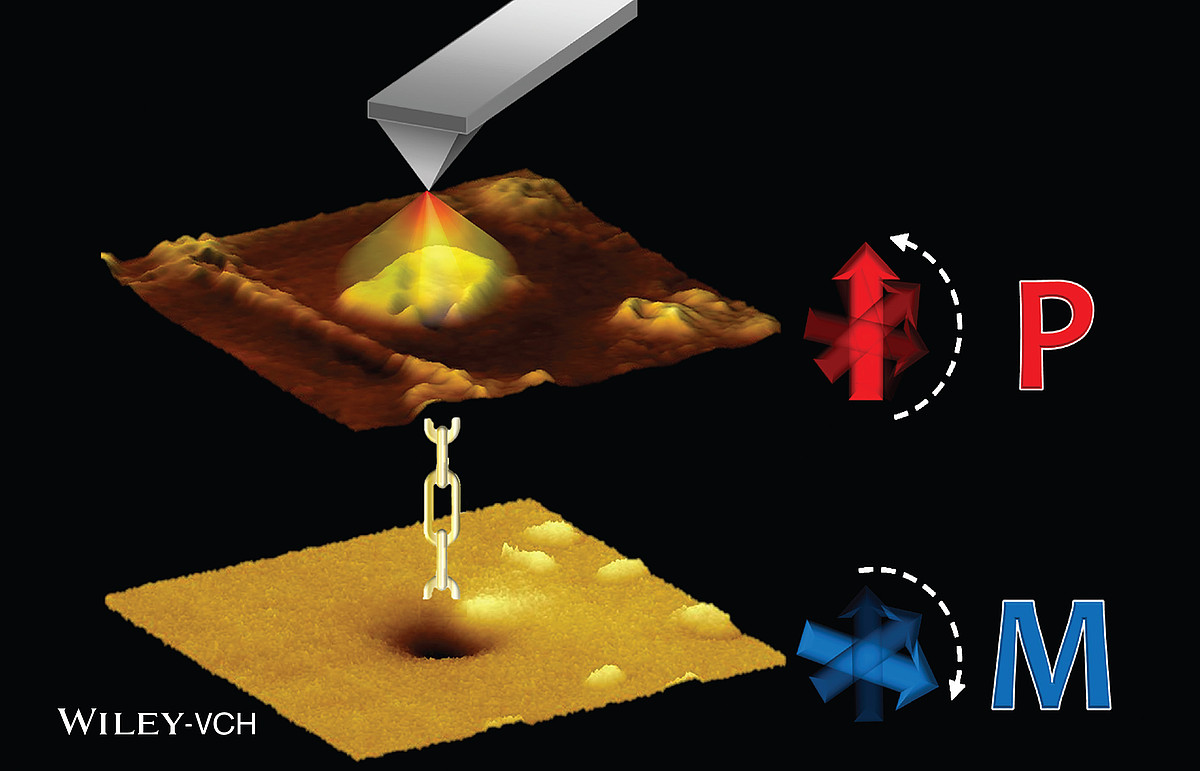Newly discovered multiferroic nano-clusters might help to enable the next generation of processor and memory devices
Newly discovered multiferroic nano-clusters might help to enable the next generation of processor and memory devices
24.06.2016
A team of scientists from England, Germany and France recently discovered novel so-called multiferroic clusters. Results were published as a featured article in the journal Advanced Functional Materials.
These nanosized regions have the ability to switch their magnetic orientation via application of an electric field, which is called magnetoelectric (ME) coupling. This ability could be used for the next generation of processor and memory devices, since it reduces the energy consumption drastically, which is one of the main obstacles for current technologies and has been termed by some scientists as the “holy grail” of research on materials for computing. The research was led by Leonard Henrichs, who showed that the ME coupling coefficient is the largest ever measured for this kind of material, using a combination of special atomic force microscopy techniques, capable of mapping magnetic and electric structures. The coupling ability of those clusters arises from the fact that they are both ferroelectric and strongly magnetic, which is extremely rare especially for materials above room-temperature. It is assumed that the strong magnetism arises from a ferrimagnetic order of Fe and Co atoms. An important fact underpinning the extraordinarily strong multiferroic properties of those clusters is their extremely high magnetic ordering temperature, i.e., their Néel temperature, which is approx. 670 K.
This was determined using neutron diffraction at the instrument D20 at ILL: the antiferromagnetic diffraction peak is monitored, while heating the sample inside a furnace, to determine the temperature at which magnetic ordering breaks down. Further experiments at ILL are planned for the future, where the composition of the ceramic materials containing BiFeO3 will be modified to achieve higher concentrations of multiferroic clusters in the material.
The electric polarization P and magnetization M are linked to each other and are both switched by the application of an electric field applied using the tip of the AFM which is illustrated schematically.


